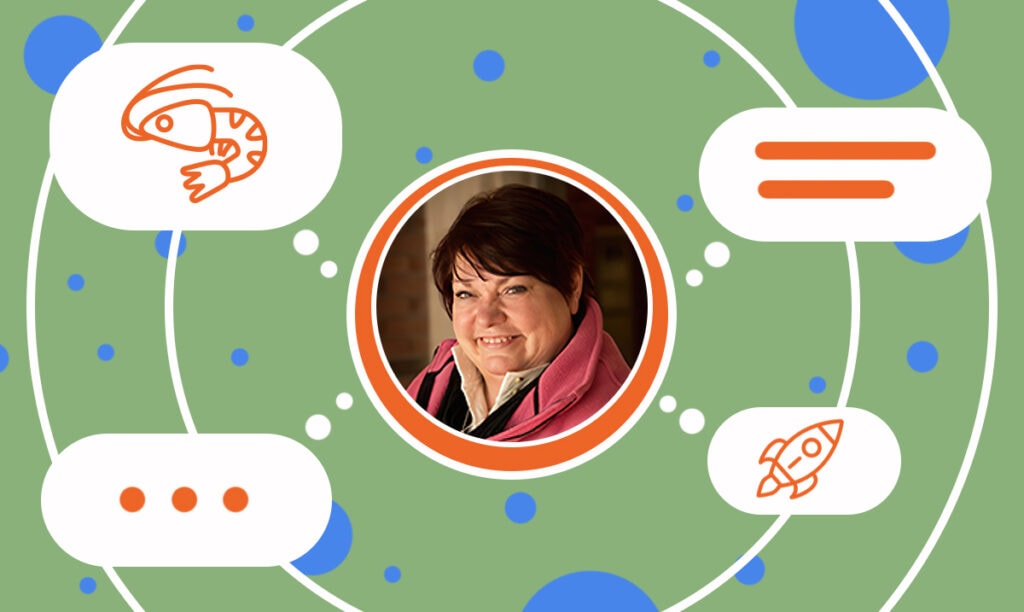In this interview, we sit down with Ben Torres, Vice President of Operations at The Vintage Whiskey and Cigar Bar, to explore the vision and passion ...
How Karlanea Brown Leads the Way in Indoor Shrimp Farming
Written by: Esther Strauss
Esther is a business strategist with over 20 years of experience as an entrepreneur, executive, educator, and management advisor.
Published on March 19, 2024

In a world where sustainability and innovation in food production are more crucial than ever, we had the pleasure of interviewing Karlanea Brown, the VP of operations and co-owner of RDM Aquaculture LLC. In this discussion, Karlanea shares her journey in transforming a unique idea into a thriving business. From the challenges of starting the third indoor shrimp farm in the US to the intricate details of sustainable farming practices, this interview delves into the heart of RDM Aquaculture’s success. Join us as we explore the insights and experiences of a visionary leader in the world of sustainable aquaculture.
Origins of an Indoor Shrimp Farm
SBS – What inspired you to start an indoor shrimp farm, especially in a location like Indiana?
Karlanea – My husband and his family were hog farmers, and we moved to Benton County to continue raising pigs. We moved up here in the fall of 1991, and in the spring of 1992, the prices bottomed out, and we would have lost everything. So, being livestock farmers, they wanted livestock on the farm but didn’t want cows, chickens, or turkeys. Aquaculture intrigued them, and they researched raising tilapia for 15 years but came across this shrimp system. Two years later, we were getting our first shrimp.
Innovating Shrimp Farming
SBS – Can you describe the challenges and benefits of using a Heterotrophic RAS system in shrimp farming?
Karlanea – One of the benefits of using Heterotrophic RAS is the sustainability of it. It means no discharge, and we have had our water for over 13 years, but it doesn’t mean we never put water down the drain. It is just a much nicer ecosystem in which the shrimp can thrive. We run with no pumps or filters. We let the water do the work for us, just imitating Mother Nature and nurturing her to the best of our abilities.
Water Quality Management
SBS – How do you maintain the quality and health of the water in your zero-exchange system?
Karlanea – We actually do nine tests on our tanks every day. We let the water tell us what is going on. With our water being brown, it is hard to see what is happening, so we let the water tell us.
Ensuring Shrimp Health
SBS – What strategies do you use to ensure the shrimp are free from antibiotics, hormones, and toxins?
Karlanea – First, by using good aquaculture practices, we won’t need antibiotics or hormones, and since we take very good care of our water, it has no toxins. We use feed that does not contain antibiotics or hormones in it. We have been fortunate not to have any diseases.
Sustainability in Aquaculture
SBS – How do you manage the environmental sustainability of your operations?
Karlanea – Mostly by taking care of the water. It helps us keep the water environmentally safe for shrimp.
Overcoming Early Obstacles
SBS – What were the biggest obstacles you faced when starting your business, and how did you overcome them?
Karlanea – This is a great question. One of the biggest obstacles was the industry’s constant telling us that we were wasting our time and could not raise shrimp indoors. That was a bit upsetting, but I have a stubborn streak, and I wanted to succeed at this. I love everything about shrimp farming.
Marketing Fresh Shrimp
SBS – How do you market your shrimp products, and what makes them stand out in the market?
Karlanea – We market our shrimp as locally grown, with no antibiotics and no hormones, and it’s the freshest shrimp you can get because we sell them live with the head on. The head on is how we can guarantee the freshness of the product. You can not freeze shrimp with the head, and the head only lasts two days on the shrimp before it starts to go bad. So, there’s nothing fresher than live shrimp with head on. I know the head freaks most people out, but cooking with the head adds the most natural sweetness to the shrimp. We use no sauces and very little seasoning.
Financial Insights
SBS – Could you share some insights into the financial aspects of running an indoor shrimp farm?
Karlanea – The first year is a real struggle. You have to keep your day job the first year. Your survival rates are low in the first year. The second year survival rates go up and your overhead cost will come down.
Advice for Aspiring Shrimp Farmers
SBS – What advice would you give to someone interested in starting their own shrimp farming business?
Karlanea – Take the baby steps. Establish the water first, and remember, this is not a get-rich-quick scheme. Consistency and passion for the life of the shrimp and the water can make you a success.
Evolution of RDM Aquaculture
SBS – How has your business evolved since its inception, and what have been the key factors for your success?
Karlanea – We started with six tanks, and we now run 19 production tanks and average 500 pounds of shrimp out our front door every month. The key factor for our success is the flavor of this shrimp. It is so clean and sweet. People love the flavor of the shrimp. I talk to anybody about our shrimp farm if they are willing to listen.
Community Engagement and Education
SBS – In what ways do you engage with the community and educate people about sustainable shrimp farming?
Karlanea – We offer classes and tours to educate people about what we do here and, hopefully, help others get into the business. I love the tours. The people are so much fun, and when they get to see a shrimp with its head on, it is always a treat. We do a couple of events every year to help promote sustainability with cooking classes.
Future of Indoor Shrimp Farming
SBS – How do you see the future of indoor shrimp farming, and what plans do you have for the growth of RDM Aquaculture?
Karlanea – I hope the future brings more indoor shrimp farms. Sometimes, we just have to leave Mother Nature alone (in this case, the ocean) to let her recoup and heal. By bringing the shrimp farms indoors, we can supply a clean source of protein without any extras, such as hormones and toxic water they grow in.
The Rewards and Lessons of RDM Aquaculture
SBS – Lastly, what has been the most rewarding part of running RDM Aquaculture, and what lessons have you learned along the way?
Karlanea – This has been one of the most rewarding things I have ever done. It is such an honor to be able to take care of a fascinating species. Shrimp are really cool creatures. So I love coming in every day and taking care of the thousands of shrimp we have and watching them go out to people who love shrimp. See. My shrimp have goals. They are told every day to eat all their food so they can be big and fat on somebody’s plate. And it is exciting to see them fulfill their goals. : )
I have learned a lot of lessons. We grow through mistakes as long as we learn from them and do not repeat them. To me, there is nothing more fun than getting up and coming to see the shrimp.
Subscribe to Our Newsletter
and gain insider access to cutting-edge business insights and trends.
Featured Resources

Ben Torres on Creating a Whiskey And Cigar Bar In Charlotte, NC
Published on September 2, 2024
Read Now

How Bombay Eats Brings Authentic Indian Cuisine to Chicago
Published on September 2, 2024
Ali Dewjee and his wife Falguni embarked on a flavorful mission 14 years ago when they founded Bombay Eats, originally known as Bombay Wraps. With a ...
Read Now

How MedAssent DDS Supports Dental Medication Management
Published on September 2, 2024
Lauren Fang is a pioneering force in digital health, co-founding MedAssent DDS with a vision to revolutionize dental care. With a deep-rootedconnect ...
Read Now
Comments